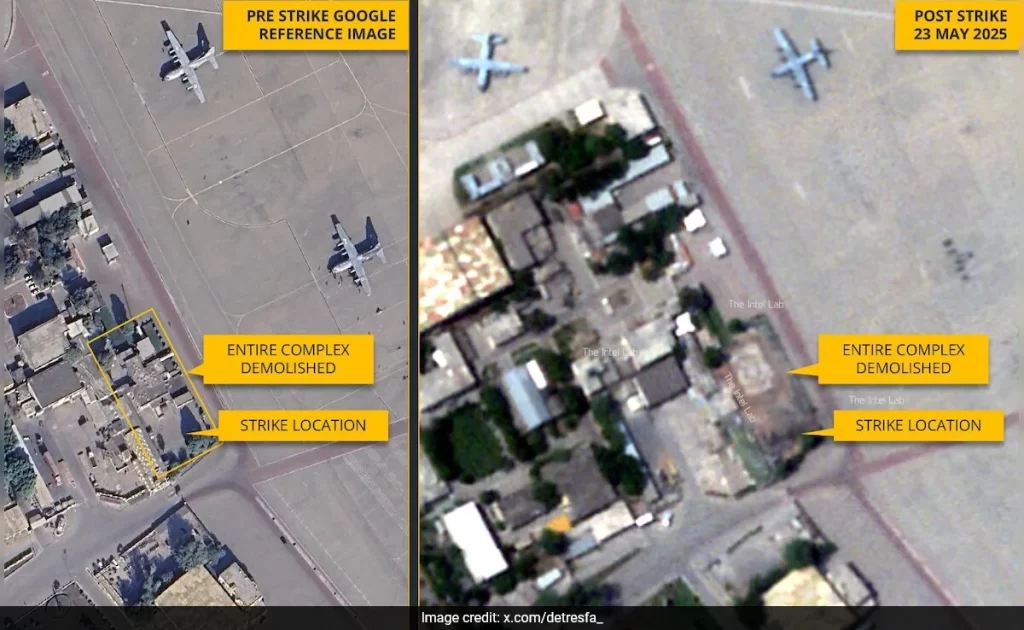Recent high-resolution satellite imagery has revealed severe damage to Pakistan’s Nur Khan Airbase in Rawalpindi, following India’s precise military action under Operation Sindoor. The extent of the destruction appears far greater than previously reported, raising serious questions about the effectiveness of Pakistan’s air defense systems and strategic preparedness.
The Nur Khan Airbase, located just 10 kilometers from Islamabad, plays a pivotal role in Pakistan’s aerial operations. It hosts a range of critical assets including Turkish-made Bayraktar TB2 drones, Pakistan’s indigenous Shahpar-I unmanned aerial vehicles, and aircraft used for VIP movements such as presidential and military leadership transport. The airbase’s strategic value is further amplified by its close proximity to Pakistan’s Strategic Plans Division, the body responsible for managing the nation’s nuclear arsenal.
The latest satellite images, analyzed by open-source intelligence experts, indicate widespread structural devastation across multiple sections of the base. An entire complex near the initial impact site has been leveled, suggesting that the airstrike was not limited to isolated targets. Earlier reports had only acknowledged damage to two specialized military vehicles. However, the new visuals confirm a broader radius of destruction, significantly impairing the operational capabilities of the facility.
Operation Sindoor, carried out on May 7, 2025, was a retaliatory strike launched by India in response to the deadly Pahalgam massacre, where civilians were targeted in a brutal terrorist attack. The operation focused on dismantling terror infrastructure and military installations believed to support cross-border militancy. Among the key targets, Nur Khan Airbase was identified as a high-value objective due to its logistical and symbolic importance.
The attack has exposed gaps in Pakistan’s defensive radar systems and aerial surveillance measures. Experts have pointed out that the failure to intercept or counter the incoming strike could signal deeper systemic flaws in response protocols. The damage is also likely to affect Pakistan’s drone warfare capabilities, as hangars and control centers were among the structures reported destroyed.
While Pakistan has maintained strategic ambiguity regarding the extent of the losses, it has not issued an official statement addressing the satellite imagery. Meanwhile, regional analysts are urging both nations to exercise restraint, warning that continued military confrontations could destabilize South Asia’s already fragile geopolitical climate.
As tensions remain high, the international community is calling for immediate diplomatic engagement. Observers stress that while targeted operations may serve short-term strategic goals, the risk of unintended escalation necessitates a renewed focus on conflict resolution and long-term stability.
The unfolding situation at Nur Khan Airbase stands as a stark indicator of the growing reliance on precision warfare and real-time intelligence. The aftermath of Operation Sindoor may reshape defense postures on both sides, with lasting implications for regional security and military strategy.



